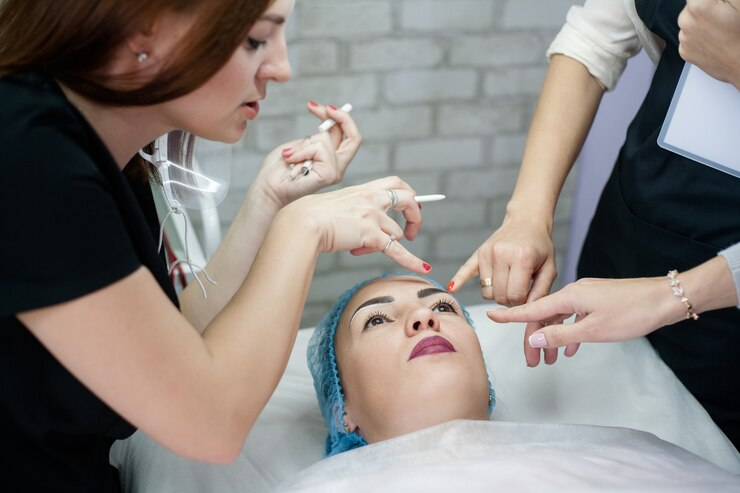You’ve tried it all. Mascara that promises “falsie-level length.” Curlers that pinch more than they lift. Extensions that look great—until one falls out and suddenly you’ve got a gap that no amount of eyeliner can disguise.
And then comes the promise of a lash serum. A slick little tube claiming to transform your lashes into the stuff of Instagram filters.
But let’s be honest: not every serum works. Some are glorified conditioners. Some sting your eyes. A few? They actually deliver. The secret is in the ingredients.
Table of Contents
Conditioners vs. Growth Promoters
Here’s the first distinction: not all lash serums are designed the same way.
- Conditioning serums nourish and strengthen the lashes you already have. They help prevent breakage and give a shinier, healthier look. Great, but they won’t suddenly sprout new ones.
- Growth-promoting serums are the heavy hitters. These are formulated with active ingredients that stimulate the lash follicle, extending the growth phase so lashes come in longer and thicker.
Knowing which camp your product falls into saves you from disappointment—and wasted dollars.
The Gold Standard: Prostaglandin Analogues
This is the powerhouse category. Lash serum originally used in eye drops for glaucoma, prostaglandin analogues were discovered to have a wild side effect: dramatic lash growth.
Ingredients like bimatoprost (the active in FDA-approved Latisse) work directly on lash follicles, extending the anagen (growth) phase. The result? Darker, longer, fuller lashes that rival extensions.
Downside? These formulas are prescription-only, and some users report side effects like eye redness or skin darkening around the lash line. But if you want guaranteed results, this class is the most clinically proven.
Peptides: The Quiet Achievers
Not into prescriptions? Enter peptides.
Peptides are amino acid chains that act like little messengers, telling cells to build more protein. When applied in lash serums, they help strengthen the follicle and improve lash density over time.
The effects are subtler than prostaglandins, but they’re safer for sensitive eyes and can be used long-term without worry. Bonus: peptides often make lashes feel stronger, so they’re less likely to snap during makeup removal.
Biotin: The Overhyped MVP
You’ve seen it everywhere: “biotin for stronger hair and nails.” And yes, biotin (a B vitamin) is critical for keratin production.
But here’s the catch: unless you’re deficient, biotin in a lash serum isn’t going to be a miracle worker. Think of it more as supportive care—it helps lashes stay strong, but it won’t magically trigger growth where there isn’t any.
Still, in combination with other actives, biotin can round out a serum’s effectiveness.
Hyaluronic Acid and Panthenol: The Hydrators
Hydration is underrated when it comes to lashes. Just like the hair on your head, lashes can become brittle if they’re dry.
- Hyaluronic acid pulls in moisture, keeping lashes supple.
- Panthenol (pro-vitamin B5) coats lashes for shine and flexibility.
Neither will give you new lashes, but they help preserve what you’ve got—making them appear fuller and healthier.
Plant Extracts: Nice, But Not Game-Changing
Green tea extract. Pumpkin seed oil. Aloe vera. The list goes on.
Do they nourish? Sure. Do they calm irritation? Often. But do they rival prostaglandins or peptides in stimulating lash growth? Not really.
That doesn’t mean they’re useless—they’re great supporting characters. Just don’t expect plant oils alone to deliver drama.
Choosing the Right Serum: The Cheat Sheet
If you want dramatic, clinically proven growth: look for a prostaglandin analogue (and be ready to talk to a doctor).
If you want gradual thickening and safer, long-term use: go peptide-based.
If you want healthier-looking lashes and a little extra shine: biotin, panthenol, and hyaluronic acid serums will do the trick.
Final Thought: The Truth in the Tube
Lash serums can be game-changers—but only if you pick the right kind. Too many products overpromise and underdeliver because they focus on marketing buzzwords instead of science.
So the next time you’re staring at a lineup of glossy tubes, skip the gimmicks and go straight to the ingredients list. Because whether it’s prostaglandins, peptides, or good old hydration, the proof isn’t in the packaging. It’s in the formula.
And maybe—just maybe—that means finally tossing the falsies.


